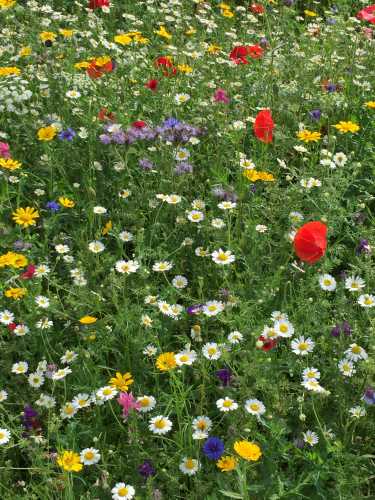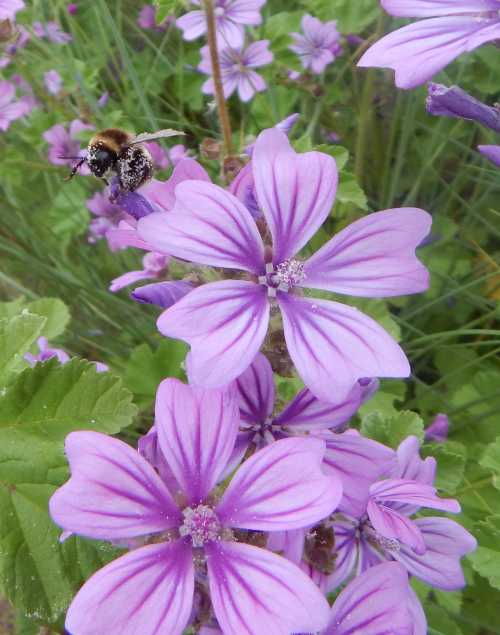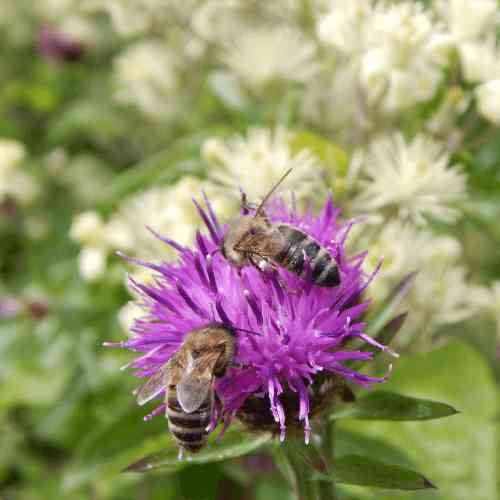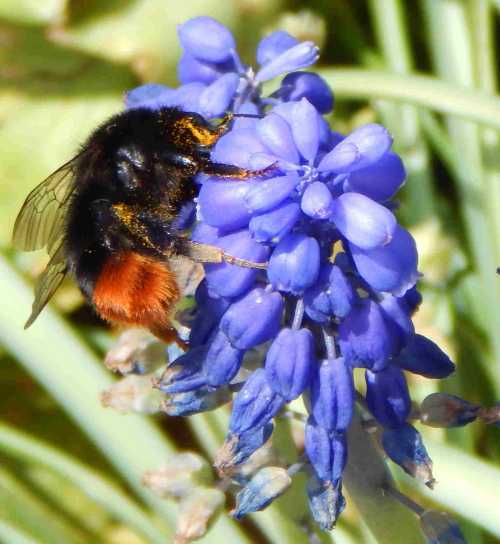Free Wildflower Seeds
When I first wrote this page, it linked in to a couple of websites offering free wildflower seeds. However, those offers have since expired, so I now find myself thinking up ways for people to get hold of wildflower seeds for free.
This time, I'm not going to link into temporary offers, because I only have to go back and sort out broken website links later. In addition, such offers are seen far less frequently these days. They tend to require a purchase of something else. So I'm going to approach this topic differently. Instead, I have put together a list of suggestions of how you can obtain free wildflower seeds for bees and other pollinators.
You can also check my list of wildflowers loved by different species of bees (as well as other pollinators, of course!).
Why We Need More Wildflowers

Wildflower habitats are crucial to wildlife, but in many countries,
these habitats have been drastically reduced. This is bad news for the
pollinators that depend upon them.
Why has this happened? A few
reasons, but especially:
- farming and agriculture practice, and
- building development which has seen housing being built on green belt - I discovered my own home had been built on what was a meadow about 25 years ago.
Whilst I am in favour of seeing more wildflowers around, to an extent, I urge you to have a good think about things before you throw lots of seeds around in your garden:
- Do you know what you are sowing? Be cautious when using seed mixes - or purchased ones for that matter.
- Be careful not to include invasive species. Focus primarily on native wildflower species (not that I am against non-native plants in general - indeed many are very beneficial to pollinators).
- Which kinds of wildflowers can your garden accommodate?
For example, if you have heavy clay soil, there is no point in trying to sow seeds that only thrive in dry conditions, and vice versa. Ensure you match your growing conditions to the wildflowers selected.
Some wildflower mixes comprise species that thrive best in well-drained, nutrient-poor soil. - Are you sure about how you are going to incorporate wildflowers, and is it the best option for both you and the pollinators in your area?
The final point may seem a strange thing to write. Mostly, I would assert that wildflowers are always great. However, sometimes it is better to have a well planned garden with carefully selected flowering shrubs, plants, bulbs and so on.
 Bumble bee foraging on Common Mallow - Malva sylvestris
Bumble bee foraging on Common Mallow - Malva sylvestrisFinding Wildflower Seeds For Bees And Pollinators, Without Paying Anything!
Here is a list of ideas:
- If legal in your region, collect them from wildflower verges. Be sure not to disturb rare species of plant.
- Find the owner of a meadow nearby, and ask if they would allow you to collect seeds.
- Sometimes, conservation organizations and charities promote wildflowers, and will even give away seeds or sell them for a small price.
- Schools can make a difference to bees, by inspiring the next generation of conservationists, entomologists and backyard naturalists.
If you are seeking seeds for a charitable project or school, you may be able to get a donation from a specialist supplier of wildflower seeds, or at least get a discount. I have personally instigated this to help a school, so I know there are suppliers who will help. Look on line to find a supplier, and write them an email. Don't be offended if they say "no" - try some-one else. Be sure to use the email address of your school or charity, and explain the project clearly. - Councils may be able to supply you, especially if you are hoping to convert a large area. Some councils are keen to promote the planting of wildflowers as part of their schemes to aid pollinators and biodiversity.
- Join local gardening and conservation groups - it may be possible to share and swap seeds.
- Look out for offers on the internet and on social media. Sometimes there are free seeds available, or very cheaply.
Further Tips For Selecting Wildflowers For Your Garden
 Honey bees on knapweed.
Honey bees on knapweed.Take into account the local flora
If you are going to plant wildflowers, take a look around your local area. Seek to plug gaps if possible, rather than add to the range of a locally abundant species.
For instance, if there is a lot of knapweed, perhaps choose something else.
Choose something that could work in your garden, and choose something you like!
I like Rosebay Willowherb, and though very valuable, I felt it could be intrusive in our small garden space. It is definitely worth thinking about the height and spread of a plant and what will work in your garden space.
Beware of plants that spread rapidly and are difficult to remove!
Bees love dandelions but most gardeners don't want them in the garden. Personally, these days I allow a few to blossom in spring when there are fewer flowers around, but remove any I don't want later in the year.
I previously experimented with hedge woundwort in my garden too, but decided I wasn't keen on the smell of it, and it spreads rapidly via seeds and underground rhizomes. It has been very difficult to get rid of.
Good choices
In terms of wildflower seeds you may easily acquire for free, in my view, ox-eye daisies, corn cockle, cornflower and poppies are a good choice and work well in most gardens.
Foxgloves are excellent too, and I have these in my garden, but I believe they are toxic for humans and so they might not be suitable if you have young children.
In smaller gardens, sometimes it's better to be very selective in your choice of wildflower, and how you use them. The garden has to work for you as well as the bees - and this is perfectly possible.
A personal experience
Having tried initially to convert
our small lawn into a
wildflower patch a few years ago, I changed my mind because it didn't really work as I had hoped. We did not enjoy the garden, nor did we attract many pollinators.
We also wanted to grow a few food crops: raspberries, plums, sometimes beans and courgettes, and I was keen to install a greenhouse for growing tomatoes.
In short, it seemed neither we nor the bees really got the benefit from our
patch of land, so I made changes. I now have flower borders, and have choice wildflowers incorporated into them, among carefully selected plants for bees. This works better for me - and the bees, and I now get a greater variety of bee species than before!
Lawn area
I now keep the grass cut
short, apart from areas of clover, daisies,
buttercup, Welsh violets, and selfheal, plus a few spring
bulbs (crocus and snowdrops) and dandelions in spring.
 Above: even a small patch can be put to use for pollinators. This spot is actually in partial shade for some of the day, due to an overhanging cotoneaster tree.
Above: even a small patch can be put to use for pollinators. This spot is actually in partial shade for some of the day, due to an overhanging cotoneaster tree.
Since I made all the changes, over time, I was able to attract hairy footed flower bees, wool carder bees, mason bees, chocolate mining bees and leaf cutters, as well as a good variety of bumble bee species and the honey bee.
Update: I now have a page about planning a bee garden, with a free, printable PDF download.
Good luck with your wildflowers!
If you found this page helpful or interesting, I'd really be grateful if you would share it with others - if not this page, perhaps another, such as Gardening For Bees.
Thank you so much :) .

